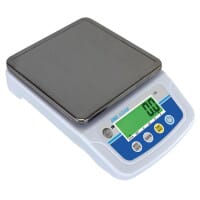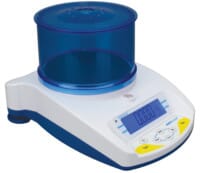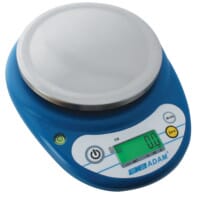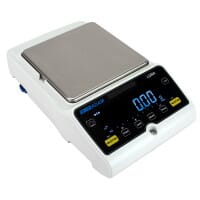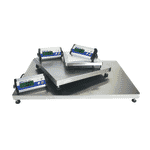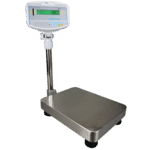
When many of us think of pottery, a scene from the movie Ghost is the first thing that comes to mind. While friendly spirits aren’t terribly useful for pottery in real life, scales and balances are useful. Let’s take a look at how weighing devices come into play when crafting pottery.
How to Make Pottery
Pottery – one of the oldest human inventions, with the earliest known vessels dating back to 18,000 BC –can be a challenging hobby for beginners and experienced potters alike. The general process of making pottery is largely the same, regardless of the different techniques for shaping it, including throwing (using a pottery wheel to shape the clay), coiling (forming coils, placing each atop of the next and shaping them until it begins to take the shape of a pot) and pinch pot (simply taking a ball of clay and hand-forming it to the desired shape).
Once you’ve chosen your clay (see below for some options), the next step is to wedge it, which is kneading the clay to eliminate air bubbles. After shaping the piece, you can enhance it with underglazes or other surface treatments and allow the piece to dry before moving onto the kiln, where it will be bisque fired and hardened. Following the addition of underglaze or glaze, the bisque pottery moves back to the kiln for its final firing, when it will be finished.
What is Pottery Made From?
Pottery is primarily made up of clay, which can be dug in its raw form from the ground, or purchased by potters in either its moist form or powdered, then rehydrated. A clay slurry called slip – which is essentially liquified clay with no fixed ratio of water and clay – can be also be used.

There are three different predominant types of pottery clay: earthenware, stoneware and kaolin. Varying compositions and amounts of metal oxides, organic materials and water define each type. Factors in choosing the type of clay include composition, workability, how porous it is, and firing temperature.
Earthenware
The most common type of clay, earthenware’s formulation contains 35 percent quartz, 25 percent kaolin, 25 percent ball clay and 15 percent feldspar. It’s highly plastic, which means it’s easily workable and sticky. When fired, its minerals composition and the type of firing determines its finale color. Common colors include red, orange, yellow and light gray. Terracotta – Italian for “baked earth” – is a type of earthenware commonly used for making roofing tiles and flowerpots.
Stoneware
The strongest, most durable pottery clay, Stoneware’s name reflects that strength and its stone-like features. It’s comprised of coarse grains, with a formulation of approximately 30 percent feldspar and chamotte (alternatively known as grog, firesand or fireclay), 15 percent quartz and 15 percent ball clay.
Stoneware becomes extremely durable and non-porous after firing, which makes it ideal for dinnerware, kitchenware and coffee mugs. Common colors include grey, dark brown and light brownish-yellow.
Kaolin
Silica-rich kaolin is the purest of the three types of pottery clay. Kaolin changes from a pale gray when moist to light gray or nearly white when fired, leading to it also being referred to as “White Clay.”
Lacking the plasticity of earthenware or stoneware, it’s the least workable. It’s often mixed with other clays to increase its workability. For example, kaolin is mixed with a ball clay (a sedimentary clay of about 20 to 80 percent kaolinite, 10 to 25 percent mica and 6 to 65 percent quartz) to make porcelain. It’s also used in cosmetics and skincare products.
Glazing & Underglazing
Glazing and underglazing are two of the most common ways to add designs, colors and finishes to pottery.

Underglaze is a fluid made up of colorants, clay, water and a small amount of frit (silica and flux). As its name suggests, it’s used prior to glazing, before the pottery is first fired. While commonly used under transparent glazes, underglaze can also be used under light-colored, light-hued and unsaturated glazes.
Glaze – which can be used on earthenware, stoneware and kaolin – is a glassy coating for pottery used both for decoration and to seal the piece’s porous finish to make it impermeable to liquids. The glaze provides a tougher surface, but can also form glossy or matte surface finishes, as well as change the piece’s color.
Precision in Pottery Making
Precision is critical to pottery, at each stage from the clay to the finished piece. The most obvious example, of course, would be to ensure consistency when making multiple identical pieces, like mugs. If you weigh the clay that you are going to use to throw a piece, it’s easier and increases the likelihood that the item being thrown will end up the same size. There are many other factors that come into play, but it’s much easier to achieve consistency when you know that the clay you start with is the same.

For weighing clay, a potter wouldn’t need a scale with fine readability (maybe 0.5lb. to 1lb.) because they’re just gauging approximately how much they’ll need for a project. The size of the item being made will determine the scale you would need. For smaller projects like mugs, the LBX, CB or CBX would be ideal. For larger items, the CPWplus is a good choice. A company that makes or sells clay by weight would, of course, need a trade-approved scale like the GBK-M.
We’ve talked about the choice between buying moist clay and powdered clay. Moist clay costs more, so dry is more economical, but it can be challenging for beginners to formulate the correct mix. If you choose to mix your own, a CPWplus can help you achieve the correct ratio of dry clay and water. Once you’ve researched and chosen the method to make your clay, using a scale means that you can repeat the process for better consistent results.
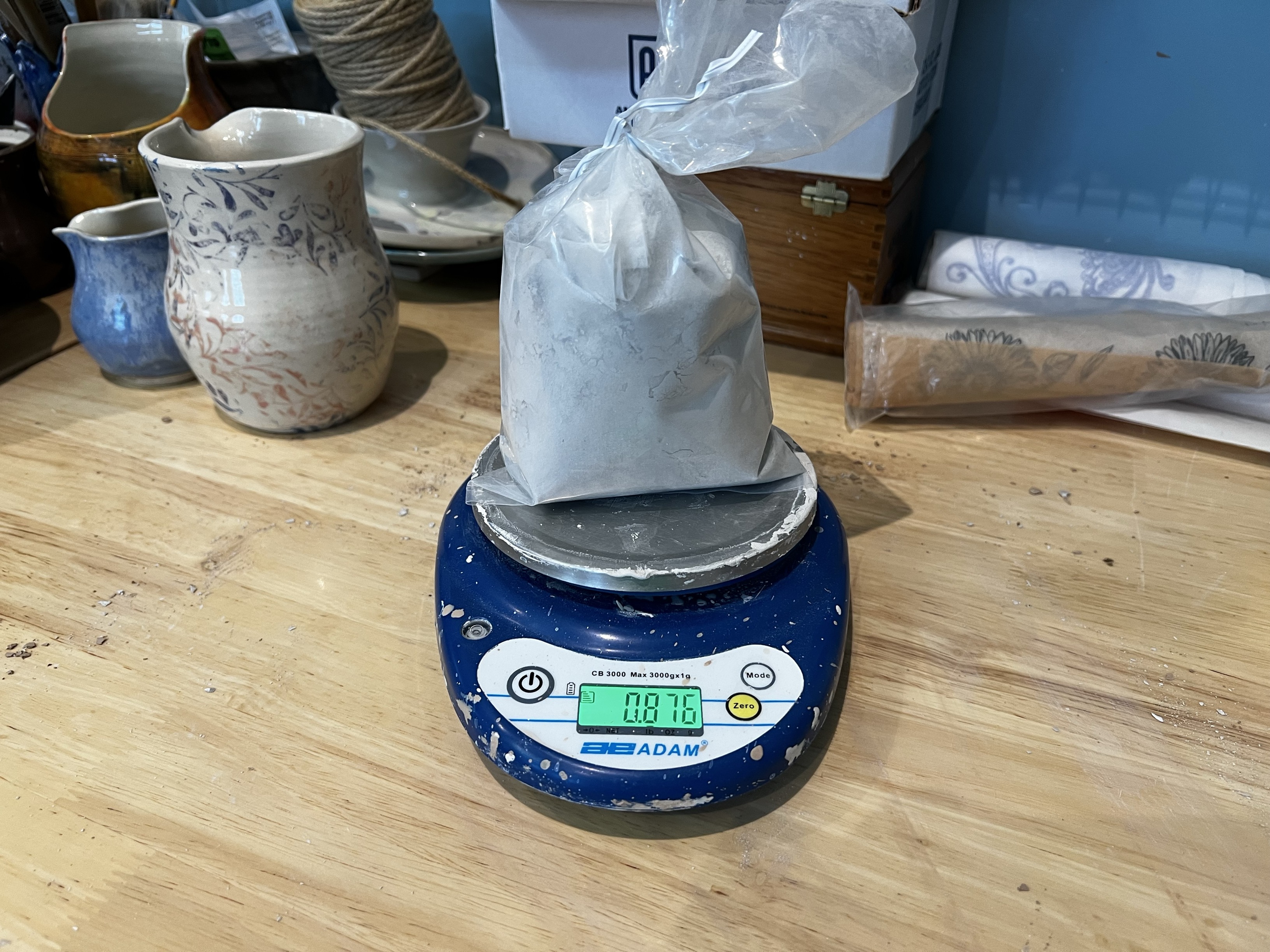
Instead of ready-to-use clay, some potters prefer to mix in other materials to increase or decrease certain properties (for example, as we mentioned earlier, adding ball clays to kaolin to make it easier to work with). When mixing, it’s important to weigh the ingredients to ensure the correct recipe for an effective clay mixture.
To achieve the desired consistency for glaze and underglaze, it’s important to maintain precise ratios for formulation. Glaze recipes are mixed as a percentage that make up 100 percent. (Sometimes more than 100 percent, but the extra percentage is typically colorant and doesn’t affect the recipe.)
For weighing glaze ingredients, choose a scale with a minimum readability of 0.1g (ideally, a 0.01g readability is preferred). A good option would be a portable compact balance like Highland model HCB 302 (300g capacity). To make larger batches of glazes at a time, higher capacity scales like the Luna LTB 6002e may be used. Glaze ingredients can sometimes be expensive, so using the correct portions of materials will not only result in consistent glazes but can also save you money by reducing waste. In the end, pottery is partly science so controlling what you can means a better chance for success when the piece is fired.

Any ceramics studio planning to sell its products would most likely create a website or sell through popular online marketplaces like Etsy and Amazon. When selling online, you’ll need to ship your works of art to customers throughout the world. A shipping scale like the CPWplus is ideal to make sure that you’re not being overcharged for shipping and that you know how much your package weighs.
Before you fire up the kiln, do you have any questions about selecting the right scale or balance for making pottery? Click here to ask us!


